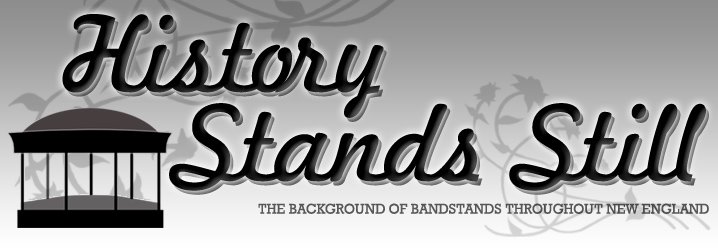FARMINGTON ME
Meetinghouse Park Bandstand
Stanwood Park
Built - 1874


The bustling town of Farmington has one of the oldest bandstands in the state being built in 1874. The structure was built in Stanwood Park, then called "Meetinghouse Park" which had originally started out as a "receptacle for cows, horses, old carts, etc." until the newly-formed Farmington Cornet Band raised $250 by popular subscription and cleaned up the park and built their large wooden bandstand which measures 24 1/2 feet across. The bandstand was built by Henry Sprague which today is considered a treasure by the town but the local paper reported then that "The beautiful common in our village-that should be the pride of all our citizens, has been given up, we regret to say, to general neglect, save the portion that have been appropriated by private parties for a lumber and store yard!!!"
Unfortunately by 1886, there were "decaying trees, unfenced ground, occasional piles of stone and numberless vehicles of as many names (which) tell a story of general neglect- an eyesore upon the village" - Maine Olmstead Alliance, Maine Survey.
In 1903, a wealthy sawmill owner offered to give a Civil War monument to the town if money were spent to beautify the park and the citizens of the town voted several hundred dollars to improve the property by putting in sidewalks and providing iron seats, etc. A new monument of the same design as one erected at Gettysburg in memory of the men of the Sixteenth Maine Infantry, was erected as promised and the bandstand was moved to an adjacent lot to provide a better view of the monument. A few years later the bandstand was moved back.
Today the "Farmington Common" is again a source of pride in the community with the bandstand still being actively used, fountains, and iron fences are still there around the park. The bandstand has long been remembered as the home of band concerts given by the prominent "Wheeler's Band" under the direction of William F. Miner and the "Old Crows," who are rumored to be named after the liquor of the same name since, at the band's first parade - Halloween, 1952 - a bottle was offered to help some of the older players, dressed as Indians, perfrom their war dance better.
INFORMATION SUPPLIED BY:
"Lest We Forget" author Barbara Merrill Fox

No comments:
Post a Comment